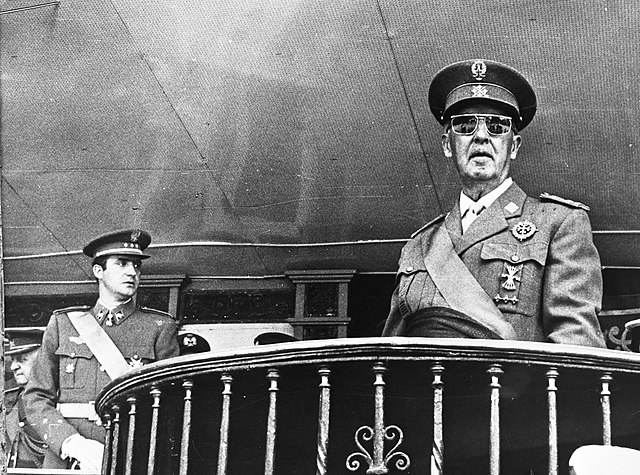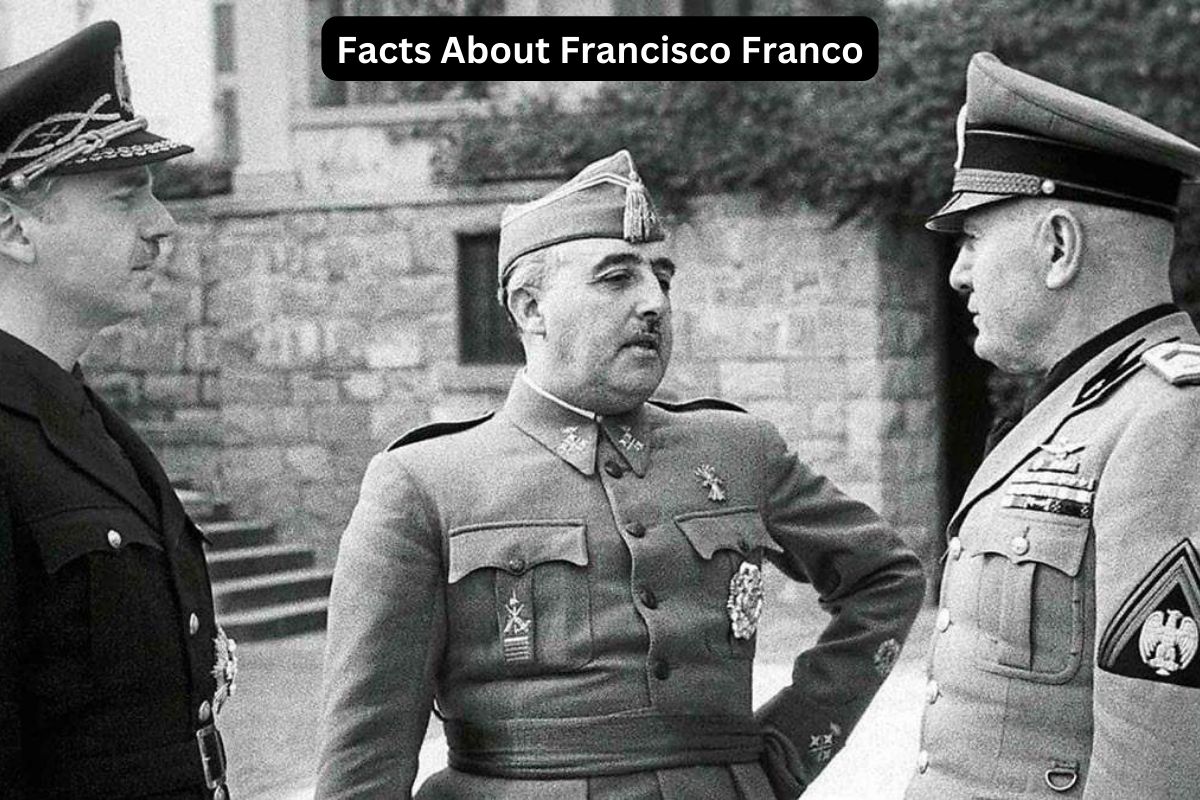Francisco Franco’s legacy looms large over Spain, shaping its politics, culture, and collective memory. In this article, we delve into the complexities of Franco’s rule and its ongoing impact on contemporary Spain.
From his rise to power during the Spanish Civil War to the challenges of transitional justice, we examine the enduring significance of Franco’s legacy in Spain’s quest for reconciliation and democratic consolidation.
Join us as we navigate the intricate tapestry of Francoist Spain and explore the lingering effects of one of Europe’s most controversial historical figures.
Francisco Franco Facts
1. Born on December 4, 1892, in Ferrol, Spain
Francisco Franco was born on December 4, 1892, in Ferrol, a coastal city in the northwestern region of Galicia, Spain.
He was the second of five children born to Nicolás Franco y Salgado-Araújo and María del Pilar Bahamonde y Pardo de Andrade.
Also Read: Spanish Civil War Timeline
His family had a strong military tradition, with his father serving as an officer in the Spanish Navy. This upbringing influenced Franco’s decision to pursue a career in the military.

2. Rose through military ranks to become a general
Franco began his military education at the Infantry Academy in Toledo in 1907. He demonstrated exceptional leadership skills and a talent for military strategy, quickly rising through the ranks.
Franco’s military career saw him serving in various colonial conflicts, including the Spanish-Moroccan War (known as the Rif War), where he gained recognition for his bravery and tactical acumen. By the time the Spanish Civil War erupted in 1936, Franco had attained the rank of General.
3. Led Nationalist forces in the Spanish Civil War (1936-1939)
When the Spanish Civil War broke out in July 1936, Franco quickly emerged as a key figure in the Nationalist faction, which rebelled against the democratically elected Republican government.
As the leader of the Nationalist forces, Franco orchestrated a military campaign to overthrow the Republican government and establish a fascist regime in Spain. Backed by support from Fascist Italy and Nazi Germany, Franco’s forces engaged in a brutal conflict that lasted nearly three years.
Also Read: Spain’s Government Facts
Franco’s leadership during the Civil War, particularly his organization of the Nationalist coalition and his strategic military maneuvers, played a decisive role in the Nationalist victory in 1939. Following the end of the war, Franco assumed dictatorial powers, effectively becoming the ruler of Spain.
4. Established a dictatorship after winning the Civil War
After winning the Spanish Civil War in 1939, Francisco Franco established himself as the undisputed ruler of Spain and began implementing a dictatorial regime.
Under his rule, all political opposition was suppressed, and Franco’s Nationalist faction became the sole political force in the country.
Franco centralized power in his hands, creating a highly authoritarian state where dissent was not tolerated. He established a cult of personality around himself, portraying his leadership as indispensable for the stability and unity of Spain.

5. Valley of the Fallen (Valle de los Caídos)
One of the enduring symbols of Francisco Franco’s rule is the Valley of the Fallen (Valle de los Caídos), a monumental complex located near Madrid. Commissioned by Franco and built between 1940 and 1958, the site was intended to honor those who died during the Spanish Civil War.
However, it has been widely criticized for its association with Franco’s dictatorship and for serving as a symbol of fascist glorification. The Valley of the Fallen includes a basilica carved into the rock, topped by a massive cross, and serves as Franco’s final resting place.
In recent years, there have been calls for the site to be repurposed as a memorial to the victims of the Civil War and Francoist repression, reflecting ongoing debates about how to address Spain’s historical memory.
6. Promoted traditionalist views of Spanish identity
Franco’s regime, often referred to as Francoist Spain or the Francoist dictatorship, was characterized by its adherence to fascist ideology, strong nationalist policies, and social conservatism.
Franco promoted a vision of Spain rooted in traditional Catholic values and Spanish nationalism, seeking to revive what he perceived as the glory of Spain’s imperial past.
The regime enforced strict censorship and controlled all aspects of public life, including the media, education, and the arts. Opposition parties were banned, and labor unions were tightly controlled by the state.

7. Kept Spain neutral during World War II
Despite ideological sympathies with fascist regimes in Nazi Germany and Fascist Italy, Franco opted to keep Spain neutral during World War II.
While Franco privately sympathized with the Axis powers and provided some limited support, including allowing Spanish volunteers to fight alongside Nazi forces on the Eastern Front, he refrained from officially joining the war.
Franco’s decision to remain neutral was influenced by concerns about Spain’s devastated economy following the Civil War, as well as fears of further conflict and instability.
By maintaining neutrality, Franco managed to keep Spain out of the widespread destruction that engulfed much of Europe during the war, allowing the country to focus on its own recovery and reconstruction efforts in the post-war period.
8. Faced international isolation post-WWII
Following World War II, Francisco Franco’s regime faced international isolation due to its association with fascism and its record of human rights abuses.
Despite Spain’s neutrality during the war, Franco’s authoritarian rule and repression of political dissent led to diplomatic isolation from Western democracies.
Spain was not invited to join the newly formed United Nations in 1945, and Franco’s regime was ostracized by much of the international community for its authoritarian practices.
9. Died in 1975, leading to Spain’s transition to democracy
Franco’s death on November 20, 1975, marked the end of his nearly four-decade-long dictatorship. His chosen successor, King Juan Carlos I, played a pivotal role in Spain’s transition to democracy. Juan Carlos initiated political reforms aimed at dismantling the Francoist system and paving the way for democratic governance. The process culminated in the approval of a new democratic constitution in 1978, establishing Spain as a parliamentary monarchy with a system of constitutional democracy.
10. Controversial legacy due to human rights abuses and authoritarian rule
Francisco Franco’s legacy remains highly controversial in Spain. While some view him as a decisive leader who preserved Spain’s unity and stability during a turbulent period, others condemn his authoritarian rule and human rights abuses.
Franco’s regime was responsible for widespread political repression, censorship, and the persecution of political opponents. His legacy continues to divide public opinion in Spain, with ongoing debates about how to reconcile the country’s past with its democratic present.
